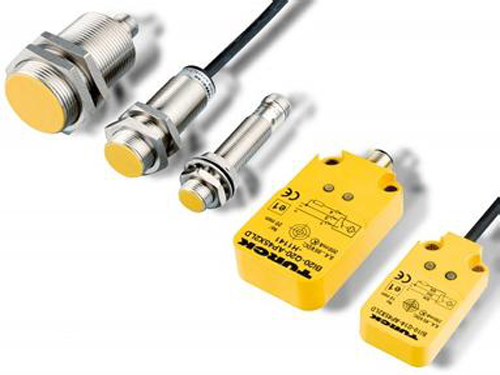The future world must be covered by sensors. Ubiquitous sensors will collect all kinds of data on the Earth. Physical, chemical and biological. The world can be quantified and can be perceived in real time. 
The way people perceive the world is changed again, just like the Internet and the mobile Internet are once again bringing about drastic changes in business models. Maybe, behind every mobile sensor in the future is a multibillion-dollar industry.
In 2009, the ambitious Hewlett-Packard had done such a project, the Central Nervous System for the Earth (CeNSE), and wanted to give the Earth a comprehensive physical examination system. Behind this ambitious vision is the dream of a billion-level sensor.
The rise of smart hardware has largely benefited from the benefits of cheaper sensors for smart phones. Behind the Nest hot sale is the temperature and humidity, the cheapness of infrared sensors, behind the rise of Jawbone and Misfit is the popularity of gravity sensors, and the drones favored by capital are also emerging after the maturity of gyroscopes, electronic compasses and GPS sensors. Behind every sensor, there may be a new industry, new opportunities.
After the first few days of doing the "hand ring, socket, millet shuffle the next market is what? When the article was reported, the insider mentioned that the sensor is one of the keys to the air purifier. Accurate data is the basis of intelligence. However, most air monitors and air purifiers nowadays use Sharp or Shenrong dust sensors to reduce costs. They can only provide range-valued particle concentrations and then use algorithms to estimate PM2.5 values.
It doesn’t seem scientific to think about such intelligence. Entrepreneurs who recently worked as air purifiers recommended climbing technology, and they successfully solved the problem. I also chatted with Zhou Zhibin, the founder of Climbing Technology.
Climbing Fuji said to 36, currently on the market, PM2.5 sensors using laser particle counting work principle, they are the only manufacturers that can take into account accuracy, consistency, and volume production. This advantage is mainly achieved through the combination of hardware and software algorithms. (Because of trade secrets involved, Canteng stated that there is no way to announce more detailed principles at the moment). In addition to measuring PM2.5 sensors, the company will mass produce formaldehyde sensors and carbon dioxide sensors.
How will PM2.5 sensors like climbing vines change the industry? Now the price difference between air monitoring and purification products is quite large. Take monitoring products as examples. The difference is often in sensors. The air fruit of ink is sold for 999 yuan, of which the external price of PM2.5 sensor price is more than 400 yuan; Haier's formaldehyde tester is priced at 599 yuan, and the price of formaldehyde sensor used has to be more than 200; most of the air purification class Sharp's dust sensors are used in the products and it is difficult to measure specific values. The so-called intelligence is more or less pseudo-smart.
Chatting with a friend who is investing in the semiconductor industry chain, he also talked about his own opinions. Module vendors such as climbing vines tend to build on their sales and technical support capabilities, and for a company doing ToB, this capability is not enough to form a long-term advantage. In addition, module manufacturers can not be considered high value-added links, gross profit is still relatively limited.
Canteng told the 36-year-old that many domestic manufacturers of air-based smart products have already placed orders or are testing the sensors of climbing vines. Next, climbing vines are likely to accumulate large amounts of environmental data, or they can be used for excavation of data or Developed into an API interface open to the outside world. However, there is one point I am quite sure about, that is to occupy the advantages of the module resources, climbing the can also consider the ToC market, but may weaken their advantage in the ToB market.
The PM2.5 sensor is just a drop in the world of sensors. The recognition it brings to the industry is not only the price reduction of air monitoring products, but also the popularity of products. Taking the domestic example as an example, haze and weather are serious and PM2.5 is a threat to human health. Although it is an indisputable fact, most ordinary people have not paid enough attention to it. One reason is that one cannot realize the seriousness of this.
When shocking figures can be presented to users, the shock and attention it brings will certainly be enormous. Earlier reports said that the city of Chicago will deploy about 50 street light sensors experimentally this summer to collect a variety of data needed by the public sector. The air sensor just opened a small window in a smart city like CeNSE. The project is the only way to a smarter planet.
The future world must be covered by sensors. Ubiquitous sensors will collect all kinds of data on the earth. Physical, chemical, and biological. The world can be quantified and can be perceived in real time. The way people perceive the world is changed again, just like the Internet and the mobile Internet are once again bringing about drastic changes in business models. Maybe, behind every mobile sensor in the future is a multibillion-dollar industry.
Where are the opportunities for that sensor? I think that the most important carrier of sensors may not only be these smart hardwares, but mobile devices such as smart phones that have already reached the plateau period are likely to rejuvenate with sensors.
Every additional sensor on the mobile terminal is likely to breed a new big market.